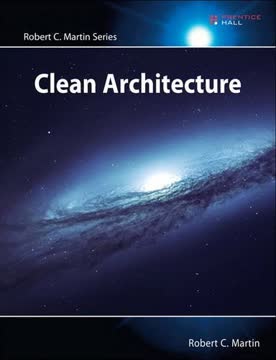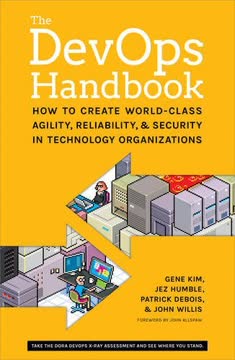Key Takeaways
1. Focus on Better Value Sooner Safer Happier, not just "Agile"
Agile, Lean, and DevOps are not the goal. An organization can score highly on a "How Agile Are We?" test (or worse, "How Much Are We Rigidly Complying to a Specific Agile Framework?" test, or "How Many Scrum Teams Do We Have?" test) without producing better business outcomes.
Shift the focus. Instead of pursuing "Agile" for its own sake, organizations should aim to deliver Better Value Sooner Safer Happier (BVSSH). This means:
- Better: Improve quality and reduce rework
- Value: Deliver what customers actually need
- Sooner: Reduce time to market and enable faster learning
- Safer: Ensure compliance and security
- Happier: Increase satisfaction for customers, employees, and stakeholders
Agile, Lean, and DevOps are tools to achieve these outcomes, not ends in themselves. Avoid the trap of "cargo cult" agile, where teams go through the motions without understanding the underlying principles. Instead, measure success by improvements in actual business outcomes.
2. Achieve big through small: Start with experiments, not transformations
Think Big, Start Small, Learn Fast.
Embrace incremental change. Rather than attempting a massive, organization-wide "Agile Transformation," focus on running small, safe-to-learn experiments. This approach:
- Reduces risk and resistance to change
- Allows for faster learning and adaptation
- Creates "social proof" as successful experiments spread
Start with volunteer teams (innovators and early adopters) and gradually expand. Use an S-curve adoption model, recognizing that change takes time and can't be forced. Celebrate and share early successes to build momentum.
Key steps:
- Identify willing teams for initial experiments
- Provide coaching and support
- Measure outcomes (BVSSH) and share results
- Gradually expand to more teams as you learn what works in your context
3. One size does not fit all: Tailor approaches to your unique context
If the path ahead is clear, you're probably on someone else's.
Customize your approach. Every organization has a unique context, shaped by its history, culture, and specific challenges. Avoid blindly copying methods that worked elsewhere. Instead:
- Assess your organization's current state and goals
- Experiment with different practices and frameworks
- Adapt and combine approaches to fit your needs
Use the VOICE model to guide your efforts:
- Values and principles: Define behavioral guardrails
- Outcomes and purpose: Focus on clear goals
- Intent-based leadership: Empower teams within guardrails
- Coaching and support: Provide guidance, not prescriptions
- Experimentation: Continuously learn and adapt
Remember that different parts of your organization may need different approaches. What works for one team or department might not be suitable for another.
4. Leadership is crucial: Model desired behaviors and foster psychological safety
The consciousness of an organization cannot exceed the consciousness of its leader.
Leaders must go first. Transforming ways of working requires active leadership engagement. Leaders should:
- Model the behaviors they want to see
- Create psychological safety for experimentation and learning
- Communicate a clear and compelling "why" for change
Key leadership behaviors:
- Embrace servant leadership
- Encourage open communication and diversity of thought
- Celebrate learning from failure, not just successes
- Provide clear direction while empowering teams
Psychological safety is critical for innovation and continuous improvement. Create an environment where people feel safe to speak up, challenge ideas, and take calculated risks. This fosters engagement and unlocks the full potential of your teams.
5. Shift from projects to products: Prioritize outcomes over outputs
Due to <this insight> We believe that <this bet> Will result in <this outcome>.
Focus on value, not activity. Move away from traditional project-based thinking towards a product-oriented mindset. This means:
- Organizing around long-lived value streams
- Forming stable, cross-functional teams
- Measuring success by business outcomes, not just delivery of features
Key shifts:
- From fixed project plans to adaptive roadmaps
- From output metrics (e.g., velocity) to outcome metrics (e.g., customer satisfaction, revenue)
- From temporary project teams to long-lived product teams
Use outcome-based planning techniques like OKRs (Objectives and Key Results) to align teams with business goals. Empower teams to experiment and pivot based on fast feedback, rather than rigidly following predetermined plans.
6. Build safety into the process: Integrate risk management throughout
Control Requirement = Control Objective + Context
Make safety continuous. Instead of treating compliance and risk management as separate, end-of-process activities, integrate them throughout the value stream. This enables both speed and control. Key practices include:
- Align safety teams with value streams
- Use "risk stories" to make risks visible and actionable
- Empower teams to right-size controls based on context
Create a "continuous control" environment:
- Safety teams partner with product teams from the start
- Automated compliance checks are built into pipelines
- Regular risk assessments and adaptation
This approach allows for faster delivery while maintaining (or improving) safety and compliance. It shifts the focus from rigid, one-size-fits-all controls to context-appropriate risk management.
7. Continuously improve technical excellence: Balance feature delivery with system health
Continuous attention to technical excellence and good design enhances agility.
Invest in your technical foundation. Delivering features quickly is important, but not at the expense of code quality and system health. Balancing technical excellence with feature delivery:
- Reduces technical debt
- Improves long-term productivity
- Enhances system reliability and scalability
Key practices:
- Dedicate time for refactoring and improvement (e.g., 20% of capacity)
- Adopt engineering best practices (e.g., test-driven development, continuous integration)
- Align technical architecture with team structures (Conway's Law)
Visualize different types of work (features, bugs, technical improvements) to ensure a healthy balance. Remember that going "slower" in the short term to improve your technical foundation often leads to going faster in the long run.
8. Create a learning ecosystem: Foster experimentation and knowledge sharing
Only having Red and Blue Security Teams is not enough. The people building what must be defended need to be included. Introducing Yellow Team—The Builders . . . need to be included as a part of Information Security.
Build a culture of learning. To thrive in a rapidly changing environment, organizations must become learning ecosystems. This involves:
- Encouraging continuous experimentation
- Creating mechanisms for knowledge sharing
- Breaking down information silos
Key elements of a learning ecosystem:
- Communities of practice to share knowledge across teams
- Regular retrospectives at multiple levels (team, department, organization)
- Investment in coaching and skill development
Embrace approaches like "Game Days" or simulations to test systems and processes in safe environments. Involve diverse perspectives (e.g., developers, operations, security) to foster holistic learning and improvement.
By creating a strong learning culture, organizations can adapt more quickly to change and continuously improve their ways of working.
Last updated:
FAQ
What's Sooner Safer Happier about?
- Focus on Outcomes: Sooner Safer Happier by Jonathan Smart emphasizes that transformation is a means to achieve better business outcomes, not an end goal. The guiding principle is delivering "Better Value Sooner Safer Happier" (BVSSH).
- Patterns and Antipatterns: The book presents successful approaches (patterns) and common pitfalls (antipatterns) organizations face when adopting agile methodologies, helping leaders identify what works in their contexts.
- Cultural Shift: It discusses the need for a cultural shift to support agility, emphasizing psychological safety and empowerment as critical components for success.
Why should I read Sooner Safer Happier?
- Practical Guidance: The book offers actionable insights and techniques for leaders to implement agile practices effectively, providing a roadmap for organizational change.
- Comprehensive Approach: Covering topics from leadership challenges to cultural barriers, it is a valuable resource for anyone involved in business transformation, with real-world examples and case studies.
- Focus on Continuous Improvement: Emphasizing continuous improvement and learning, it aligns with the needs of modern organizations aiming to thrive in a rapidly changing environment.
What are the key takeaways of Sooner Safer Happier?
- Transformation as a Means: Transformation should be viewed as a vehicle for achieving better outcomes, with leaders focusing on BVSSH to guide their efforts.
- Empower Teams: Empowering teams to choose their processes and adapt practices fosters intrinsic motivation and engagement.
- Descale Before You Scale: Descaling work processes before scaling agile practices helps identify and alleviate impediments to flow and efficiency.
What are the best quotes from Sooner Safer Happier and what do they mean?
- "Imposing agile methods...": This quote highlights the importance of allowing teams to choose their processes, underscoring the need for intrinsic motivation and ownership.
- "Impediments are not in the path...": Challenges during transformation are opportunities for learning and improvement, crucial for achieving better outcomes.
- "You cannot force the pace of change.": Change is an emergent process that cannot be rushed, encouraging leaders to nurture change for sustainable transformation.
How does Sooner Safer Happier define "Better Value Sooner Safer Happier" (BVSSH)?
- Better: Refers to the quality of outcomes, emphasizing built-in quality rather than inspection, with measures like fewer incidents and improved satisfaction.
- Value: Defined as what is important to the customer and organization, encompassing financial, social, and environmental impacts, unique to each organization.
- Sooner, Safer, Happier: "Sooner" relates to time to market, "Safer" to governance and risk management, and "Happier" to the well-being of customers and employees.
What is the significance of leadership in Sooner Safer Happier?
- Role Modeling: Leaders must exhibit desired behaviors, fostering psychological safety and empowering teams to take ownership of their processes.
- Transformational Leadership: Linked to higher performance, leaders who inspire and support teams create an environment conducive to change.
- Engagement and Empowerment: Leaders are encouraged to engage with teams and invite participation, fostering a culture of continuous improvement and innovation.
What is the concept of Punctuated Gradualism in Sooner Safer Happier?
- Combination of Approaches: Punctuated Gradualism blends continuous improvement (kaizen) with disruptive innovation (kaikaku), allowing for adaptation and significant changes.
- Incremental and Radical Change: Focus on daily improvements while being open to larger, transformative changes, maintaining momentum and responsiveness.
- Real-World Application: Examples of successful implementation demonstrate its effectiveness in achieving business agility, encouraging adoption in change initiatives.
What are the patterns and antipatterns discussed in Sooner Safer Happier?
- Patterns: Successful approaches include focusing on outcomes, achieving big through small changes, and fostering continuous improvement.
- Antipatterns: Common pitfalls include unclear outcomes, using old thinking for new methods, and imposing practices rather than inviting participation.
- Practical Framework: Patterns and antipatterns are structured for easy identification and application, facilitating learning and adaptation.
How can organizations implement the concepts from Sooner Safer Happier?
- Start Small: Begin with small, safe-to-learn experiments rather than large-scale transformations, allowing for quick feedback and adjustments.
- Focus on Outcomes: Prioritize BVSSH outcomes and communicate their importance, aligning efforts and encouraging process ownership.
- Create a Supportive Environment: Establish a Ways of Working Center of Enablement (WoW CoE) to support and coach teams, facilitating continuous improvement.
What are the challenges organizations face when adopting agile practices according to Sooner Safer Happier?
- Cultural Resistance: Ingrained norms can lead to fear and reluctance, hindering the adoption of new practices and impeding progress.
- Lack of Psychological Safety: Without psychological safety, employees may hesitate to voice concerns or suggest improvements, resulting in disengagement.
- Imposed Change: Imposing agile practices can lead to cargo cult behavior, where teams follow rituals without understanding their purpose, undermining effectiveness.
How does Sooner Safer Happier suggest measuring success in agile transformations?
- Outcome Metrics: Measure success through BVSSH outcomes, focusing on quality, value, speed, safety, and happiness, with transparent and regular reviews.
- Feedback Loops: Establish fast feedback loops to assess changes' effectiveness and make necessary adjustments, supporting continuous improvement.
- Avoiding Targets: Caution against rigid targets, which can lead to gaming the system, focusing instead on trends and empowering teams to set improvement goals.
Review Summary
Sooner Safer Happier received mostly positive reviews, with readers praising its practical insights on business agility and modern product development. Many appreciated the book's focus on outcomes over methodologies, real-life examples, and comprehensive coverage of relevant topics. Some readers found it repetitive and lacking depth in certain areas. The book was particularly valued by those in leadership roles or involved in organizational transformations. While some felt it offered little new information, others considered it an essential read for understanding and implementing agile principles effectively.
Similar Books










Download PDF
Download EPUB
.epub digital book format is ideal for reading ebooks on phones, tablets, and e-readers.




